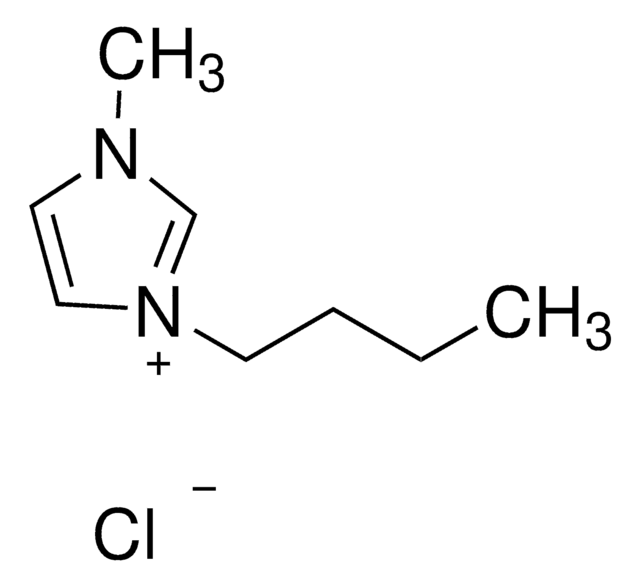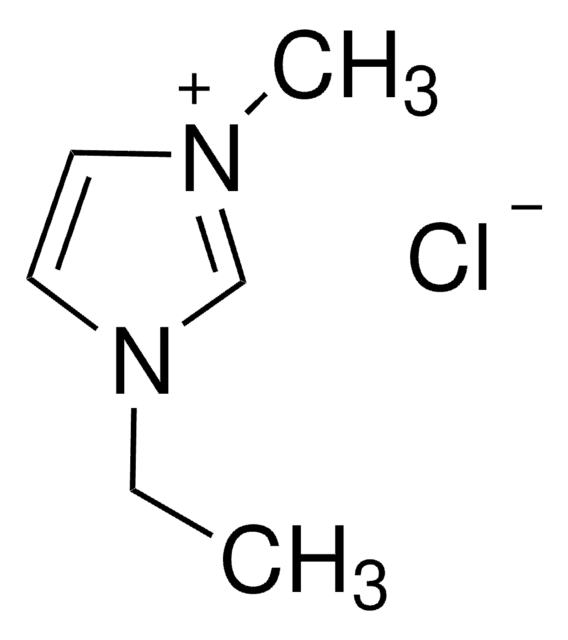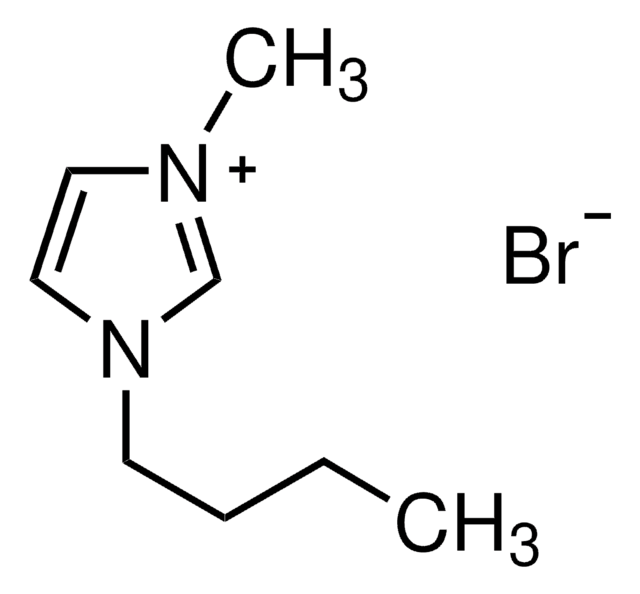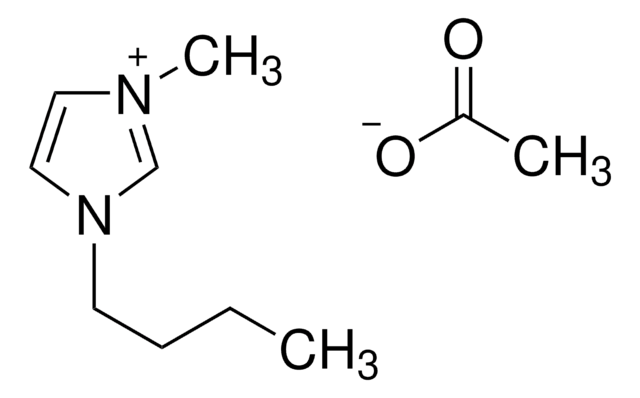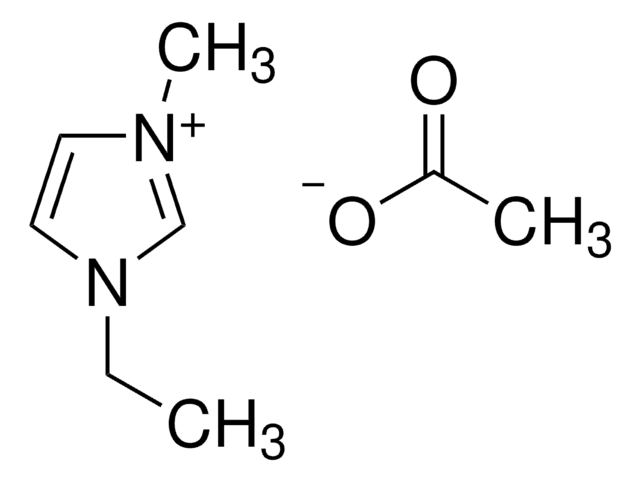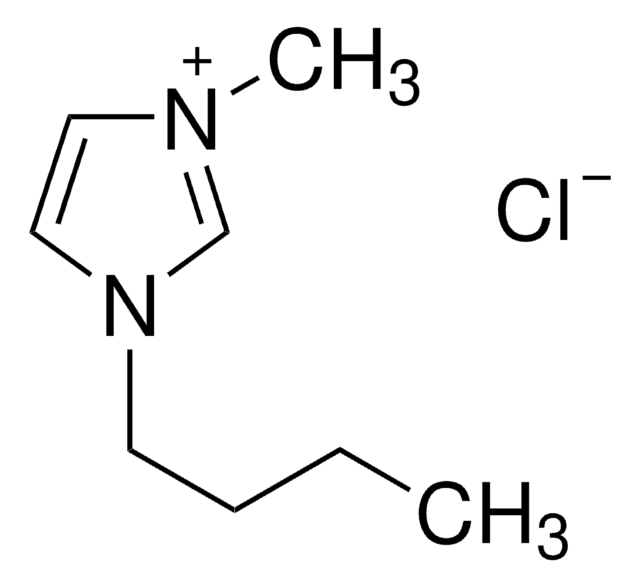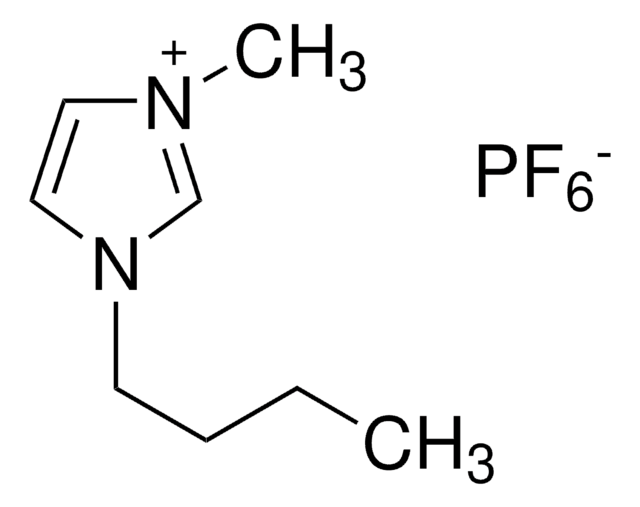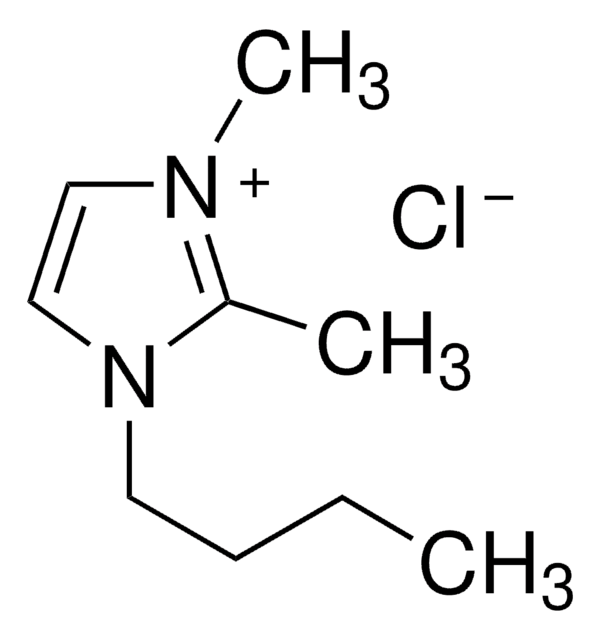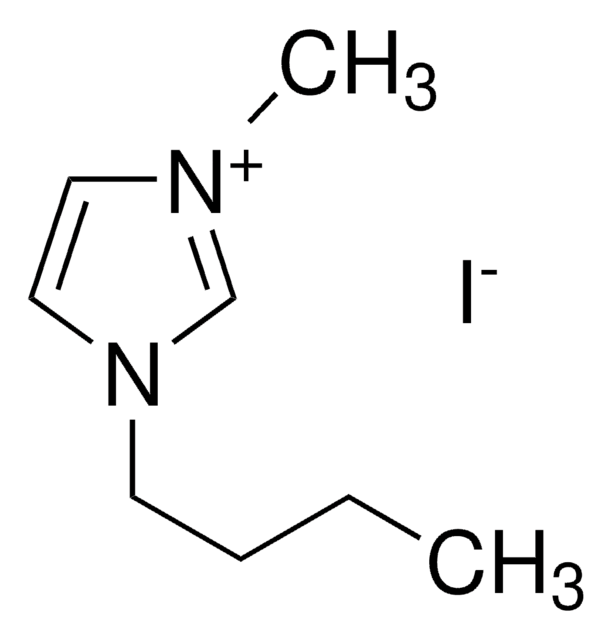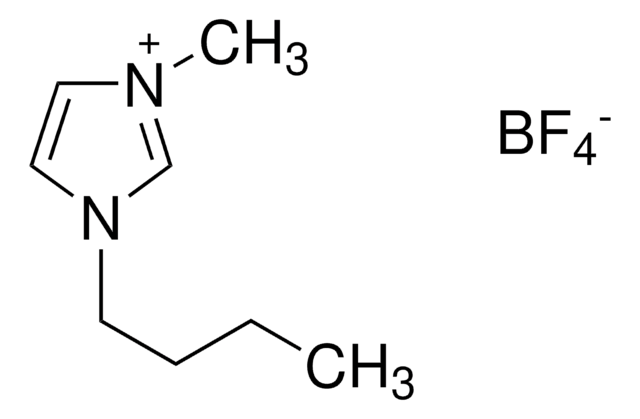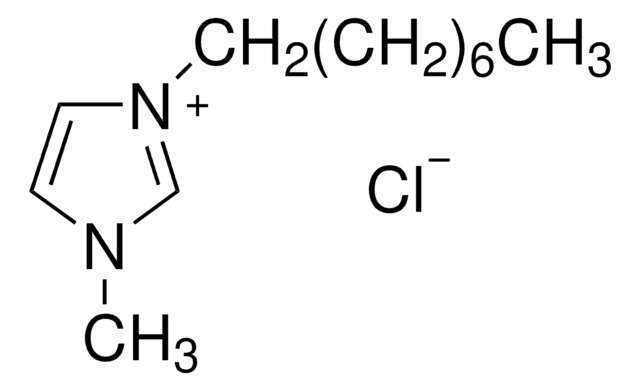04129
1-Butyl-3-methylimidazolium chloride
≥99.0% (HPLC)
Synonym(s):
BMIMCl
About This Item
Recommended Products
Quality Level
Assay
≥99.0% (HPLC)
form
powder
impurities
≤0.2% water
mp
~70 °C
SMILES string
[Cl-].CCCCn1cc[n+](C)c1
InChI
1S/C8H15N2.ClH/c1-3-4-5-10-7-6-9(2)8-10;/h6-8H,3-5H2,1-2H3;1H/q+1;/p-1
InChI key
FHDQNOXQSTVAIC-UHFFFAOYSA-M
Looking for similar products? Visit Product Comparison Guide
General description
Application
Signal Word
Danger
Hazard Statements
Precautionary Statements
Hazard Classifications
Acute Tox. 3 Oral - Aquatic Chronic 2 - Eye Irrit. 2 - Skin Irrit. 2
Storage Class Code
6.1C - Combustible acute toxic Cat.3 / toxic compounds or compounds which causing chronic effects
WGK
WGK 3
Flash Point(F)
377.6 °F - (External MSDS)
Flash Point(C)
192 °C - (External MSDS)
Personal Protective Equipment
Choose from one of the most recent versions:
Already Own This Product?
Find documentation for the products that you have recently purchased in the Document Library.
Customers Also Viewed
Articles
Ionic Liquids have been thoroughly investigated as solvents in most types of catalytic reactions. Their merit lies in the ease with which their physical–chemical properties can be tuned by varying either the anion, the cation, or its substitution pattern.
Our team of scientists has experience in all areas of research including Life Science, Material Science, Chemical Synthesis, Chromatography, Analytical and many others.
Contact Technical Service